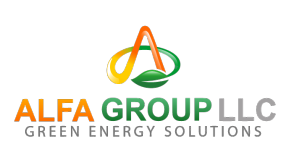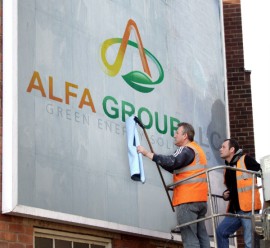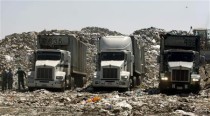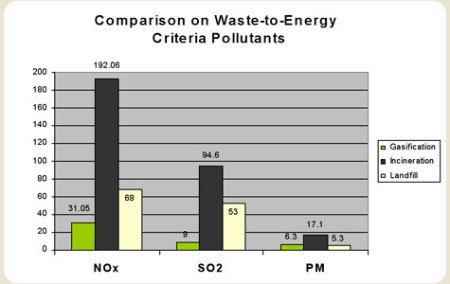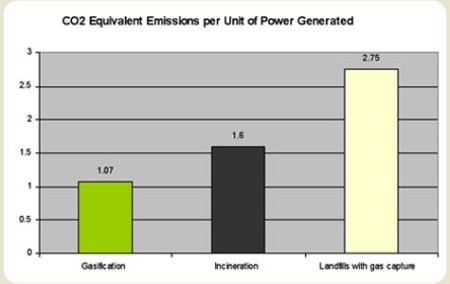The Solution
Plasma Arc Technologies & Cool Plasma Gasification
Plasma gasification is a proven technology that is making significant commercial advancements. It is quickly emerging as the optimal solution to many of the Earth's growing waste disposal and energy challenges in the 21st century.
Present-day plasma gasification technologies can effectively transform nearly any waste material into valuable resources, including electricity, synthetic fuels, and commercially valuable products. The extremely high temperatures involved in gasification create a plasma state, often referred to as the "fourth state of matter," following gas, liquid, and solid. In nature, well-known examples of plasma include lightning and the sun.
At the core of the plasma gasification technology system are plasma torches, which generate exceedingly high temperatures, producing an ionized gas stream or plasma. These torches and heating technologies were originally employed by NASA in the early 1960s to assess the durability of their space vehicle's heat shields during re-entry into our atmosphere. Their successful commercial adaptation has made them viable for use in various industries.
While plasma gasification is not a new technology, its application in waste-to-energy is a recent and innovative development that has emerged in the past decade due to the technology's superior capabilities, including:
1. Achieving sustainability goals, particularly the complete conversion of municipal solid waste (MSW) into usable and marketable by-products such as energy, alternative fuels, metal recovery, glass, and construction materials.
2. Minimizing air emissions when compared to other waste-to-energy technologies and effectively managing the release of greenhouse gases.
3. Eliminating the necessity for landfill disposal of municipal solid waste, thereby addressing related environmental concerns.
Conversion From Waste to Energy
Applications
Waste-to-energy (WTE) encompasses recyclable consumer products (such as plastics, eWaste, and used tires), municipal solid waste (MSW), biomass, sludge, and other non-hazardous waste.
Hazardous waste disposal involves chemical wastes (e.g., PCBs), chemical warfare agents, radioactive wastes, inorganic wastes (e.g., ash, asbestos), medical wastes, and spent batteries.
In situ (in place) Vitrification is employed for contaminated soil and sediment remediation as well as landfill remediation.
Geotechnical applications mainly pertain to soil stabilization.
|
Technology |
Temperature |
Conversion to Energy |
|
Plasma Gasification |
7,200 – 12,600° F |
816 kWh/ton of MSW |
|
Conventional Gasification |
1,400 – 2,800° F |
685 kWh/ton of MSW |
|
Pyrolysis Gasification |
1,400 – 2,800° F |
685 kWh/ton of MSW |
|
Pyrolysis |
1,200 – 2,200° F |
571 kWh/ton of MSW |
|
Mass Burn (Incineration) |
1,000 – 2, 200° F |
544 kWh/ton of MSW |
• The plasma FILL reactor reduces material input by up to 95%, and all the by-products of the reaction have commercial value. Potentially, all waste delivered into the reactor is eliminated. This fact revolutionizes conventional waste management practices, rendering landfills no longer "landlocked."
• The most significant effect is the transformation of the landfill into a waste depot.
• In a plant where waste is transformed into other commercial products, your most valuable asset is the ability to continue attracting agents who will deliver waste.
• There are two major costs that a plasma FILL plant can recoup:
- Opportunity costs based on market mispricing.
- The lost value once the landfill is capped.
• Virtually every other physical asset gains value as supply decreases. It's challenging to imagine, for instance, that the cost of oil will remain constant as its known supply diminishes. The same principle applies to buildable land.
• By economic principles, landfill managers should progressively increase the costs for using their landfill as the facility nears the end of its lifespan. However, this is not the case. All the revenue lost due to permitting and municipal economics is suddenly regained with the introduction of the plasma FILL.
• The plasma FILL reactor enables landfill owners to recover these lost costs by accelerating the amount of waste they can accept.
• Secondly, the value of your assets diminishes with the arrival of each truck. The book value of your assets decreases by exactly the tipping fee of each arrival.
• If only 5% of your landfill is used for each truck, that multiplies the value of each arrival by 20 times. If you utilize the infinite FILL service, where all commercial by-products are removed from your facility, the value of each arriving truck becomes mathematically infinite.
• This represents a complete transformation in the valuation of your business.
• These are innovative methods applied to an established technology, and as such, specific valuation parameters for this reevaluation are not yet available. Nevertheless, it is highly likely that the conversion of landfills into waste depots offers multiple advantages for asset owners in terms of cost reduction, increased revenue flow, improved financing for existing operations, and sustainable book asset value.
• It is improbable that any other single capital improvement will have as dramatic an effect on your assets as the introduction of plasma FILL reactors.
• Controlling gas, leachate, and runoff:
Despite our best efforts, most landfills do not operate as closed systems. Materials enter a landfill, undergo various physical, biological, and chemical reactions, and then a mix of different materials emerges.
The most effective way to control gas, leachate, and runoff is to prevent the introduction of solid waste into your landfill. Before the introduction of the plasma FILL reactor, this could only be achieved through incineration. The plasma FILL reactor allows solid waste agencies to regulate the amount of waste entering the landfill, thereby controlling the growth of landfill gases and leachate.
• A 1-ton block of trash inside a typical landfill might measure approximately 3.5 cubic feet. If the organic material in that ton of trash were allowed to decompose completely, it would generate approximately 12,000 cubic feet of gas. This gas would consist of roughly 50% methane and 50% carbon dioxide, with small quantities of other constituents depending on the initial waste composition.
• According to Brian Guzzone, with the EPA's Landfill Methane Outreach Program (LMOP), landfill-gas-to-energy (LFGTE) projects in the US delivered 75 billion cubic feet of gas in 2006. An additional 250 billion cubic feet per year may be available from potential LFGTE projects that have yet to be developed. That's enough gas to cover the state of Massachusetts to a depth of nearly 6,000 feet.
• Most landfills generate leachate. The amount can vary significantly depending on numerous factors, with climate being the most influential. Landfills in very arid climates may produce no detectable leachate under normal conditions, while those in wet climates may generate millions of gallons per year.

